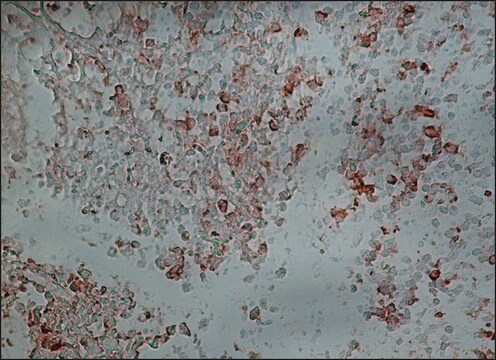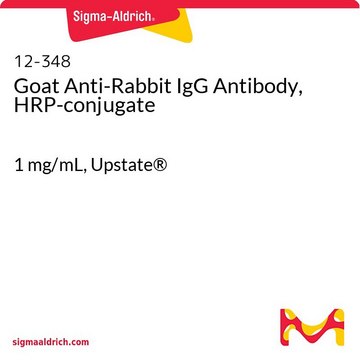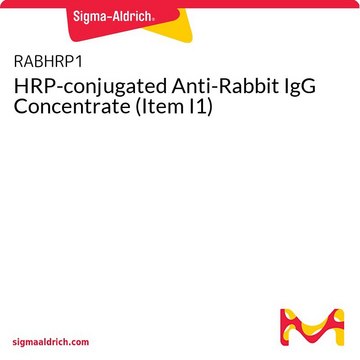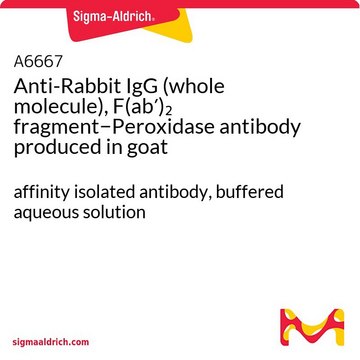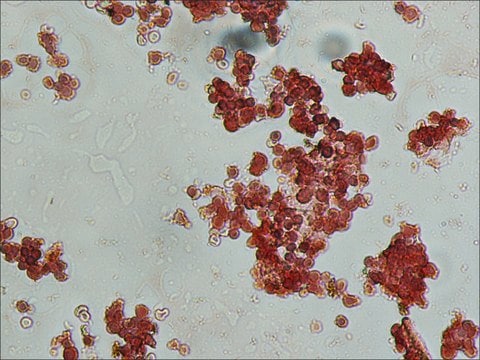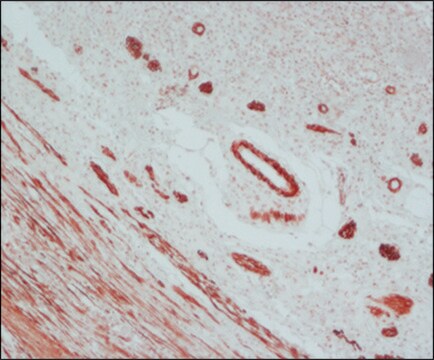A0545
Anti-Rabbit IgG (whole molecule)–Peroxidase antibody produced in goat
affinity isolated antibody
Sinonimo/i:
Anti Rabbit, Anti Rabbit Antibody, Anti Rabbit Igg, Anti-Rabbit Igg, Goat Anti Rabbit IgG Antibody - Anti-Rabbit IgG (whole molecule)–Peroxidase antibody produced in goat, Goat Anti Rabbit Igg
About This Item
Prodotti consigliati
Origine biologica
goat
Livello qualitativo
Coniugato
peroxidase conjugate
Forma dell’anticorpo
affinity isolated antibody
Tipo di anticorpo
secondary antibodies
Clone
polyclonal
Reattività contro le specie
rabbit
Non deve reagire con
human
tecniche
direct ELISA: 1:30,000 using using 5 μg/ml of rabbit IgG for the coating and OPD substrate
immunohistochemistry (formalin-fixed, paraffin-embedded sections): 1:200
western blot (chemiluminescent): 1:80,000-1:160,000 using detecting β-actin in total cell extract of HeLa cells (5-10 μg/mL)
Condizioni di spedizione
dry ice
Temperatura di conservazione
−20°C
modifica post-traduzionali bersaglio
unmodified
Cerchi prodotti simili? Visita Guida al confronto tra prodotti
Descrizione generale
Specificità
Immunogeno
Applicazioni
Anti-Rabbit IgG (whole molecule)-Peroxidase antibody produced in goat has been used as a secondary antibody during immunofluorescence staining.
Azioni biochim/fisiol
Stato fisico
Nota sulla preparazione
Stoccaggio e stabilità
Esclusione di responsabilità
Non trovi il prodotto giusto?
Prova il nostro Motore di ricerca dei prodotti.
Avvertenze
Warning
Indicazioni di pericolo
Consigli di prudenza
Classi di pericolo
Skin Sens. 1
Codice della classe di stoccaggio
12 - Non Combustible Liquids
Classe di pericolosità dell'acqua (WGK)
WGK 2
Punto d’infiammabilità (°F)
Not applicable
Punto d’infiammabilità (°C)
Not applicable
Certificati d'analisi (COA)
Cerca il Certificati d'analisi (COA) digitando il numero di lotto/batch corrispondente. I numeri di lotto o di batch sono stampati sull'etichetta dei prodotti dopo la parola ‘Lotto’ o ‘Batch’.
Possiedi già questo prodotto?
I documenti relativi ai prodotti acquistati recentemente sono disponibili nell’Archivio dei documenti.
I clienti hanno visto anche
Il team dei nostri ricercatori vanta grande esperienza in tutte le aree della ricerca quali Life Science, scienza dei materiali, sintesi chimica, cromatografia, discipline analitiche, ecc..
Contatta l'Assistenza Tecnica.
